After 0403 Hualien Earthquake
April 3, 2024, 7:58:09 a.m. – At the peak of rush hour, when most people in Taiwan were hurrying to work and school, the island was struck by an earthquake measuring 7.2 on the Richter scale. The epicenter was in Shoufeng, Hualien. Taroko National Park—which once attracted countless tourists with its spectacular scenery of high mountains, amazing gorges, and towering boulders—was suddenly scarred by falling rocks. However, this stunning test by Teacher Earth has also made us reconsider how people and nature should share the resources of national parks and strive toward balance.
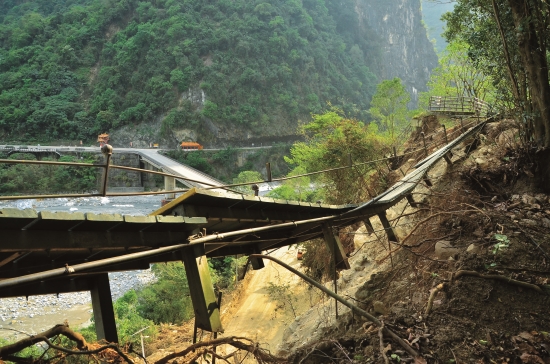
The force of nature that shakes the earth prompts us to rethink how we live together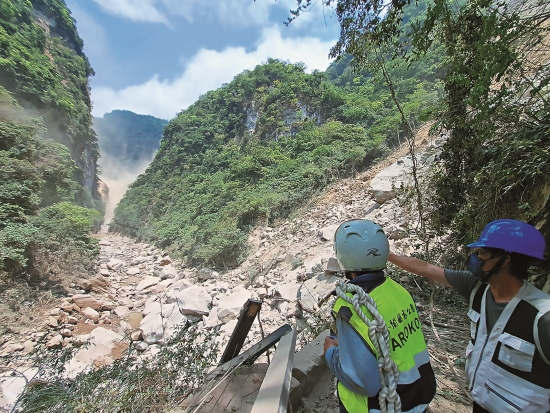
Colleagues from TNPH rushed to the Shakadeng Trail at the first time
Emergency Response Tasks of Taroko National Park Headquarters
1、Set up a Disaster Response Center, with the head of the Headquarters and all first-level supervisors stationed there.
2、Publish announcements on the park’s website in Chinese, English, and Japanese prohibiting all tourists from entering the park.
3、Deploy staff to inspect and report on the disaster conditions and close the entrances to the trails.
4、 Continue to cooperate with rescue teams to carry out the rescue and temporary relocation of tourists.
5、Monitor the impact of weather changes on disaster relief and the environment.
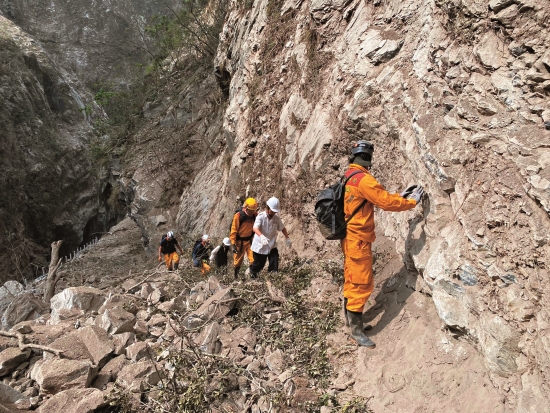
The search and rescue team brought the trapped people out of Jiuqudong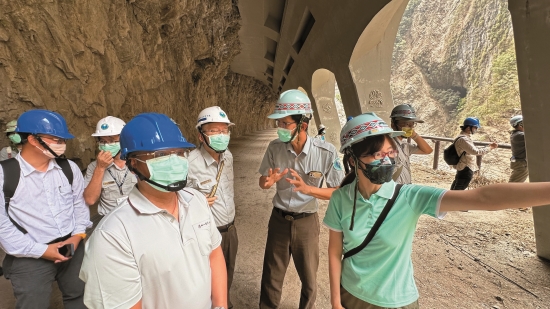
The National Park Service and experts listened to explanations by colleagues
from the TNPH in the Jiuqudong open-cut tunnel, which was less affected.
From Reconstruction to Coexistence with Nature
After the earthquake, the National Park Service deployed additional manpower to assist Taroko National Park Headquarters in actively investigating and reconstructing the disaster area, instituting the principle of reopening the park in phases and zones. According to Lee-Chu, Sun, as for the overall landform changes that have occurred, the headquarters has commissioned a consulting firm to conduct investigation and safety assessment. After the earth’s crustal movement has calmed down a bit, drones will be deployed on the trails and into the depths of the disaster areas to take satellite images of the long-term sampling points. This will enable headquarters to identify the direction of future reconstruction and compose strategies for reopening the areas.
For areas that are relatively safe, including Taroko Terrace, Changchun Shrine, Buluowan, Tianxiang, the headquarters is scheduled to reopen in stages from 2024 until the end of 2025. As for the more seriously damaged areas such as the Swallow Grotto Trail, Shakadang Trail, the reconstruction program still needs to be planned in detail, and is initially estimated to be completed by 2031.
Nevertheless, perhaps due to the shock of the wounds on the land, the typical cries for the headquarters to be reopened as soon as possible after the disaster have been less intense this time around. Through photos depicting the actual damage, more and more people recognize the concept that, “The earth needs to recuperate in order to minimize the chance of future backlash,”
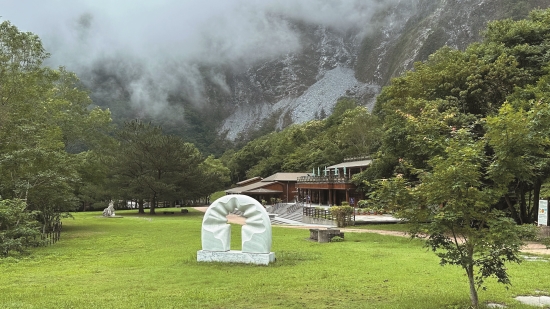
The lower of Buluowan Terrace, which was less damaged, will be opened first.
A Pioneering Native Seed Ball Expansion Program
In order to prevent exotic species, such as the highly prolific Leucaena leucocephala and Mikania micrantha, from invading the exposed rock strata and collapsed land while Taroko is recuperating, Taroko National Park Headquarters also cooperated with Hualien’s Tzu-Chi University. Under the leadership of Professors Yie-Ru, Chiu and Mu-Lin, Chang, students and park volunteers were instructed to search the southern district of Hualien for five types of native plant seeds: Callicarpa formosana, Boehmeria densiflora, Boehmeria wattersii, Buddleja asiatica, and Thysanolaena latifolia. The seeds were then dried, mixed with the soil, and pinched in the palm of their hands to create meatball-sized seed balls.
In early July, Taroko National Park Headquarters and Mu-Lin, Chang led volunteers to sprinkle and catapult tens of millions of native Taroko seeds onto the collapsed land near the entrance of Chongde Tunnel, which had been seriously damaged. Sun Lee-chu emphasized that the seed ball collection and production program is still ongoing. In order to strengthen the restoration of mountains and forests, in the future, they plan to utilize drones for large-scale seed distribution during the most suitable planting seasons. The seed balls will be scattered in collapsed and exposed rocky areas, overcoming the challenge of strong winds in the gorge, and accelerating and expanding the area for seed ball proliferation.
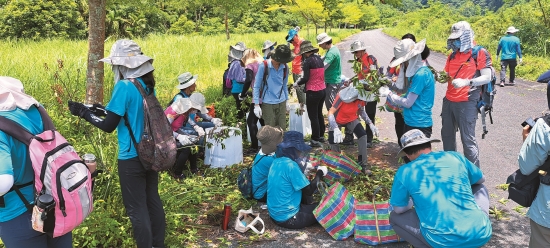
Calling on volunteers to collect native seeds.
